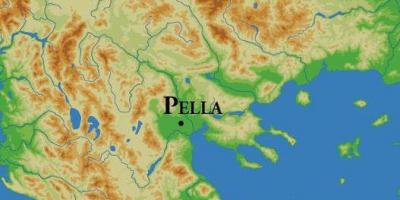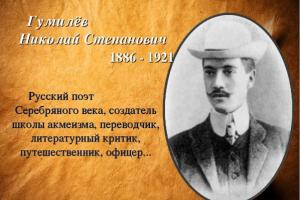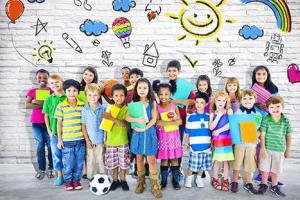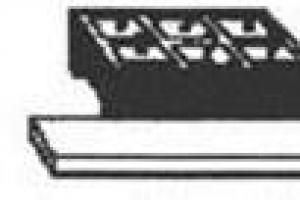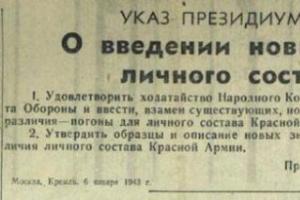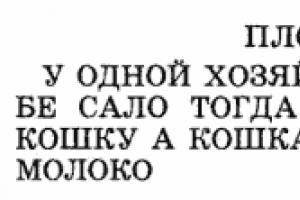Preview:
Tasks:
1.To form elementary ideas in children
About the Solar System.
2.Introduce children to the features of rotating
There are planets around the sun.
3. Lead children to their own conclusions,
Initiative statements.
Vocabulary work: consolidate and activate words:
"Solar system", "planet", "orbit",
"star", "ball", "satellite", "moon",
"solar family"
The solar system is our “solar family”, which includes 9 planets.
The planet is a huge cold ball, it cannot glow on its own and is visible only by what illuminates it
star.
Orbit is the name given to the space “road” of ships, satellites, and planets.
Preliminary work: looking at illustrations about the solar system, postcards about the starry sky,
Moon.
Conversations on the topic “Space”,
Reading fiction:
Galpershtein L.Ya. My first encyclopedia.
Bashkirova E. Heavenly Zoo. Magazine
“Preschool education” No. 4,5,6-1995.
Levitan E.P. Starry Tales.
MayorovaG. Games and stories about space.
Khoroshilova N., Pankova M. Card index of zostars.
Magazine "Hoop", No. 1 2002.
H O D Z A N I T Y
There is a knock on the door and Dunno comes in.
Dunno. Hello, tell me, is there a cosmodrome here?
Educator. No, this is not a cosmodrome, this is a kindergarten. Why do you need a spaceport?
Dunno. I'm going to fly to a planet called "Moon".
Educator. Children, tell me, is there really a planet called “Moon”?
Children. No.
Educator. Tell me, what is the Moon?
Children. The Moon is a satellite of the Earth.
Dunno. Well, okay then I’ll fly to the Sun.
Educator. Dunno, in my opinion you know nothing about the solar system. Guys, let's tell Dunno about what we know, and Dunno will sit and listen.
Tell me, please, is the Sun a planet?
Children. No. The sun is a star. A star is a collection of hot gases. There are a lot of stars.
Educator. Tell me, are they all the same?
Children. The stars are not the same; the hottest ones are blue, yellow ones are cooler, and orange ones are even colder.
Educator. Okay, well done. Planets revolve around the Sun. Tell me, how many planets do we know in our solar system?
Children. There are 9 planets in total.
Educator. What planets are these?
Children. (list)
Educator. Guys, here I have a model of the universe, let's put them in order. Just first remember that each planet moves along its own path, which is called
Children. Orbit.
Educator. Name the first planet of the solar system.
Children. Mercury. (put the image on the model)
Educator. Mercury is the closest planet to the Sun. Mercury is so hot that tin and lead melt on it, and all the water turns into steam. Mercury orbits the Sun in less than three months.
Beautiful star in the sky
It sounds like the word "faith"
What's the girl's name?...
Children. VENUS
It is the second planet from the Sun.
Educator. Venus is shrouded in clouds of pungent vapors. From these clouds, poisonous rain pours onto the surface of the planet.
What is the name of the planet we live on?
Children. This is the third planet Earth.
Educator. Guys, tell me. Does the Earth have satellites?
Children. Yes, the Earth has a natural satellite, the Moon. And there are also many artificial ones.
PHYSICAL MINUTE.
Educator. For the stargazer I am a mystery
And I start with "M"
But I'm not a chocolate bar
Although everyone likes me too.
Children. This is the fourth planet Mars.
Educator. Mars is slightly smaller than Earth. It's colder there than on Earth. Why?
Educator. How many satellites does Mars have?
Children. It has two natural satellites.
Dunno. Guys, try to guess my riddle.
I have 15 friends
15 companions of my life,
What kind of planet is this?
Children. Jupiter.
Educator. That's right, this is the largest planet in the solar system; it has 15 satellites and consists entirely of condensed gases.
I'm very attractive
Everyone recognizes me by sight.
Undoubtedly I am influential
I wear a fashionable ring.
Dunno. Can I answer? This is Saturn.
Educator. This is one of the giant planets, which has an amazing ring and many moons. The ring consists of large and small stones and cosmic dust. What other planets have rings?
Children. Uranus and Neptune.
Educator. What is the last planet?
Children. Pluto.
Educator. The 9th planet of our solar system is Pluto. It's not gas, it's solid. Does she have a companion?
Children. It has one natural satellite.
Educator. Pluto is so far away that it takes 250 Earth years to complete one revolution around the Sun.
So you and I have compiled a model of the solar system, and now Dunno probably remembers what planets there are.
Dunno. Yes, today I not only learned what planets are, but also learned a lot of interesting things about the planets themselves. Guys, Znayka gave me some very interesting questions, let’s try to answer them. And for each correct answer I will give you stars.
QUIZ
Is the sun a star or a planet?
What is an orbit?
How many planets move around the Sun?
How long do stars live? A) stars are born and die;
B) stars live forever;
Which planet is closest to the Sun?
Which planet is the most distant?
What kind of sun? a) gaseous;
B) hard.
Which statement is true? a) The Sun is larger than the Earth;
B) The Earth is larger than the Sun.
What is Earth? a) star;
B) planet.
Does Venus have satellites?
How many moons does Saturn have? (10 or 15)
What are Saturn's rings made of? a) from stones and dust;
B) from gas.
Dunno. Well done guys, you explained everything to me very well. And now I want to say goodbye to you. Goodbye.
The teacher summarizes the lesson.
PHYSICAL MINUTE
One, two - there's a rocket
Three, four - plane
One, two - clap your hands
And then on every account.
One two three four-
Arms higher, shoulders wider
One two three four-
And they walked around on the spot
And now we are children
Let's fly on a rocket
Rise up on your toes -
The rocket will fly up.
Target:
Explain to children what the solar system is,
Introduce the concepts of “planets”, “orbit”,
Enrich and activate the vocabulary: star, planet, Sun, Mercury, Venus, Earth, Mars, Jupiter, Saturn, Uranus, Neptune, Pluto, Moon, Solar system.
Material:
Planets of the Solar System,
Illustrations of the starry sky, planets,
A grain of wheat and a big ball,
Progress of the lesson:
Imagine guys that on a clear frosty evening you went outside and looked at the sky, what will you see there? (answers)
How many stars! How bright they are! There are very, very many stars in the sky. All stars are huge balls of fire. But the temperature of these hot balls is different, so their colors are different. The hottest stars are white, slightly less hot are blue, then yellow follows, and red closes the row.
Why do you think stars appear small?
Right. The stars are infinitely far from us.
Which star is closest to Earth?
It pours light on the Earth
And gives us all warmth? (Sun)
Sun- the closest star to us, this is the center of our solar system. Do you think the Sun is far or close?
Very far -150ml. km.
The sun gives us the main thing - light and warmth, and that is why life is possible on Earth!
What common between The Earth and the Sun, and how are they different?
Both the Sun and the Earth are spherical in shape.
Both celestial bodies move in outer space.
But the Sun is a star, and the Earth is a planet.
The sun is very hot, and its surface is gases.
The Sun is many times larger than the Earth. If you imagine the Earth in the form of a grain of wheat, then the Sun next to it will be the size of a watermelon (show).
Why is the Sun called the source of life on Earth?
If it had not warmed and illuminated the Earth with its rays, our planet would have turned into a dead icy desert, and eternal night would have reigned on it. All plants would die, because they need sunlight and warmth to live. And plants, in turn, feed people and animals. In addition, plants release oxygen into the atmosphere, which is needed for breathing. So it turns out that thanks to the Sun there are plants, animals and people on Earth.
Planet Earth revolves around a fiery star - the Sun. But besides the Earth, eight other planets revolve around it. All together they make up solar system. The planets and the Sun resemble a friendly family. The head of this family is the Sun. Some of the planets are closer to the Sun, others are further from it. Each of the planets rotates in its own orbit - (the path of movement of the planets). Neither planet ever collides with another or leaves the solar system.
Fizminutka:
One-two. there is a rocket standing - children raise their hands up
Three or four, takeoff soon - spread arms to the sides
To reach the sun - circle with your arms
The astronauts need a year - he takes his cheeks with his hands, shakes his head
But on the road we are not afraid - arms to the sides, tilting the body to the right and left
Each of us is an athlete - we bend our elbows
Flying over the ground, they spread their arms to the sides
Let's say hello to her - they raise their hands up and wave goodbye.
The path is over, the rocket has landed, forests and fields are in front of you.
Hello our home planet!
Hello our native Earth.
What planets do you know? Name them.
The closest planet to the Sun is Mercury. It's very hot on this planet.
Mercury is the planet closest to the Sun,
It is flooded with rays of hot light.
He gets so many rays
That this other planet is hot.
Second planet Venus. The surface of Venus is rocky, This planet has an atmosphere; consisting of carbon dioxide, which neither people nor animals can breathe. They named her in honor of the goddess of beauty Venus.
Only the Sun and Moon
The sky is brighter than she is.
And a hot planet
Not in the Solar System.
Where in the solar system is our planet Earth?
Our Earth- the third planet from the Sun. It created favorable conditions for the life of plants, animals and people. Most of our planet is occupied by bodies of water. And water is necessary for all living organisms.
The third planet from the Sun.
Our Earth is smaller than a star.
But she has enough warmth and light,
Clean air and water.
Isn't life on Earth a miracle?
Butterflies, birds, a bug on a flower...
You will find life on Earth everywhere -
In the most distant, remote corner.
Mars- the fourth planet from the Sun. If you look closely at the night sky, you will notice that Mars is distinguished from other planets by its reddish light, which is why it is often called the “Red Planet”. Mars got its name in honor of the god of war.
Mars is a mysterious planet.
It is slightly larger than the Moon.
Because of the blood red color
The planet was named after the god of war.
Fifth planet from the Sun Jupiter. It is the largest planet in the solar system.
Jupiter is the largest of all the planets,
But there is no land on the planet.
Liquid hydrogen everywhere
And bitter cold all year round!
Sixth planet Saturn, consisting of gases, the temperature is low. This planet is yellow-orange in color and is surrounded by rings of ice blocks and rocks.
Saturn is a beautiful planet
Yellow-orange color,
And rings of stones and ice
She is always surrounded.
Seventh Planet Uranus.
The atmosphere of Uranus is a cold fog.
It is the only planet that rotates on its side.
Uranus is a couch potato and is too lazy to get up,
The planet cannot rise.
The fortieth anniversary lasts a day there
And the fortieth anniversary is night.
Neptune- eighth planet from the Sun.
The planet Neptune is far from Earth,
It's not easy to see her through a telescope,
The eighth planet from the Sun,
An icy winter reigns here forever.
Pluto the most distant planet. Pluto is the coldest planet. He's a little planet.
It takes five hours for the light to
Fly to that planet
And so she
Not visible through telescopes.
Think and tell me how all the planets of the solar system are similar?
All planets are spherical and all revolve around the Sun.
All planets in order
Any of us can name:
One - Mercury,
Two - Venus,
Three - Earth,
Four - Mars.
Five - Jupiter,
Six - Saturn,
Seven - Uranus,
Behind him is Neptune.
He is the eighth in a row.
And after him, then,
And the ninth planet
Called Pluto.
Questions at the end of the lesson:
What is the name of the star closest to us? (Sun)
What shape does the sun have? (Ball)
What is bigger, the Earth or the Sun? (Sun)
How many planets are there in the solar system? (9)
Which planet is the smallest? (Mercury)
Which planet is the largest? (Jupiter)
Which planet is called the red planet? (Mars)
Which planet is surrounded by a ring? (Saturn)
What is the Solar System? (Planets and Sun)
What is an orbit? (The path of the planets
Extracurricular activity
Subject: " Planets of the Solar System".
Direction: broadening your horizons.
Participants: 2nd grade children
Software tasks:
To form children's understanding of the planets of the solar system.
Foster interest in space exploration.
Develop visual attention.
Equipment: illustration of a spaceship, illustrations of the planets, a blank model of the solar system, pictures of the planets of the solar system, cards with the names of the planets, a diagram of the solar system, plasticine, boards, stacks, oilcloth.
Expected Result:students will name the planets of the solar system; Make a model of the solar system from plasticine.
Progress of the lesson.
Organizing time.
- Guys, I am very glad to see you and your kind faces, radiant eyes! Let's give a piece of our good mood to each other! Guys, look at each other and smile!
Emotional mood
Guys, do you want to fly into space and explore new things? And who knows what you can use to get to Space? (children's answers). That's right on a spaceship, because neither planes nor helicopters fly into space; in order to fly, they need to rely on air, and there is no air in space. Well, let's get into our spaceship and fly...
Motivation
You all know how to listen carefully and answer questions, you love to learn new and interesting things. Today I will tell you a few secrets of space. But first guess riddle:
It pours light on the Earth,
And it gives us all warmth.(children’s answers: “Sun”)
By what signs did you determine that it was the sun?
Updating knowledge
What is the Sun? (children's answers)
That's right, guys, the sun is a huge hot ball. It emits heat and light, gives life to people, plants, animals.
Is there life in the sun? (children's answers)
Right. There is no life in the sun, it is very hot there. The Sun is the star closest to us; there are brighter stars in outer space.
Who remembers the name of our planet? (children's answers).
What would happen if the sun did not warm our planet with its rays? (children's answers).
That's right, guys, our planet Earth would turn into an icy desert and eternal night would reign on it. Plants and all living things would die, because we need sunlight and warmth to live. So it turns out that thanks to the Sun there are plants, animals, and people on Earth.
Lesson topic message
Guys, the Sun is not lonely, he has a family. Guys, do you want to know about the family of the sun? (children's answers)
The family of the sun is not mom and dad, not sons and daughters. These are planets. And today I will tell you a secret about the solar family. Another name for the “solar family” is the “solar system.” Today I will tell you about the planets of the solar system and introduce you to the order that reigns in the solar system. Today we will make a model of the solar system together.
Explanation of new material
Each planet has a name, just like you and me. Watch, listen and remember carefully.
(The teacher reads a poem and puts images of the planets on the diagram of the solar system.)
Let's outline the topic of conversation:
The planets around the Sun are dancing like children.
Mercury - the planet closest to the Sun.
It is flooded with rays of hot light,
It receives so many rays that this planet is hotter than others!
(A picture depicting Mercury and a card with the name are placed on the diagram of the solar system).
Who remembers the name of the first planet from the Sun? (children’s answers: “Mercury.” Choral pronunciation.)
And behind him in a silver chariot
The queen is flying in the sky.
Her appearance is youthful. Gentle,
Her horses are snow-white,
And winged and beautiful
Golden-eyed, golden-maned... This is Venus)
(On the diagram of the solar system there is a picture depicting Venus, a card with the name).
What is the name of the second planet from the Sun? (children’s answers. Choral recitation of “Venus”)
Well, our third planet
Most of it is water
And you tell me what her name is... Earth .
(On the diagram of the solar system there is a picture depicting the Earth, a card with the name).
What is the name of the third planet from the Sun? (children's answers)
Mars - a mysterious planet.
It is slightly larger than the moon,
Because of the blood red color
The planet was named after the God of War - Mars.
(A picture depicting Mars and a card with the name are placed on the diagram of the solar system).
What is the name of the fourth planet from the Sun? (children's answers)
Jupiter - more than all the planets,
But there is no land on the planet.
Liquid hydrogen everywhere
And bitter cold all year round.
What is the name of the fifth planet from the Sun? (children's answers)
Saturn – beautiful planet
Yellow-orange color,
And rings of stones and ice
She is always surrounded.
(On the diagram of the solar system there is a picture depicting Jupiter, a card with the name).
What is the name of the sixth planet from the Sun? (children's answers)
Uranus - couch potato. And he’s too lazy to get up,
The planet cannot rise,
The fortieth anniversary lasts a day there
And the fortieth anniversary is night.
(A picture depicting Uranus and a card with the name are placed on the diagram of the solar system).
What is the name of the seventh planet from the Sun? (children's answers)
Planet Neptune far from Earth
It's not easy to see her through a telescope,
The eighth planet from the sun,
An icy winter reigns here forever.
(A picture depicting Neptune and a card with the name are displayed on the diagram of the solar system).
What is the name of the eighth planet from the Sun? (children's answers)
Rushing through distant space Pluto,
Barely illuminated by the sun's rays.
(A picture depicting Pluto and a card with the name are displayed on the diagram of the solar system).
What is the name of the ninth planet from the Sun? (children's answers)
How many planets are there in the Sun's family? (Nine planets).
What is the family of the sun called? (The family of the Sun is called the Solar System).
Let's repeat together once again the names of the planets of the solar system. (Choral speaking).
Perfect order reigns in the Sun's family: no one pushes, interferes with each other and does not offend each other. Each planet has its own path along which it runs around the Sun. The path along which the planet moves is called an orbit. (Choral pronunciation of the word “orbit”)
So what is the name of the path along which the planet moves? Now, look carefully at the diagram of the Solar System. Count how many paths-orbits around the Sun?
(Children's answers).
Yes, as many as there are planets – nine.
A game to develop visual attention.
"Find differences".
Look carefully: are the orbital tracks all the same or have you noticed any differences? (They vary in length).
Which planet's orbital path is the smallest?
Which planet's orbital path is the largest?
What is the Earth's orbit from the Sun?
What is the path-orbit of the planet Pluto from the Sun?
Fizminutka:
At the teacher’s signal “One, two, three – run!”, the children move to the music: run, jump. As soon as the music stops, they freeze. The teacher takes turns touching the children and asking them questions:
What do they use to fly into space?
Name the planets of the solar system that you remember?
How far is planet Earth from the sun?
What is the farthest planet?
What is the family of the sun called?(repeat the game 3-4 times)
Practical part.
Guys, let us create a model of the solar system from cardboard and plasticine. Each of you will create one planet, but first, let's distribute who will sculpt which planet.(children independently choose who will sculpt which planet).
Guys, look carefully at the planet you have chosen, what color is it? Notice if it is one color or does it have several colors?
There is plasticine in front of you, take the necessary colors for the planet you have chosen. We take it and get to work.
Guys, first let’s roll each color of plasticine into a ball, and your planet is multi-colored, then you will need to connect several colored plasticine balls. (Show).
During practical work, provide guiding assistance to the children of the weak group.
The planets are ready, now they need to be attached to the sun, but most importantly they need to be distributed in the correct order.
(Children take turns going to the board on which the model of the solar system is attached and sticking their own. Naming it.)
Guys, tell me each about your planet that you sculpted:
Pupils compose a story according to plan:
What is the name of the planet?
What color is it or what colors does it consist of?
Which size is small or large?
On what track orbit is it located from the sun?
Conclusion.
Guys, tell me, did you like our lesson?
What did you like most about the lesson?
I also really liked it, especially how you actively worked today, answered questions, and carefully created a model of the solar system.
Well done everyone today!
Elena Taranenko
Developmental lesson for the senior group on the topic: « solar system»
Taranenko Elena Sergeevna.
TsRD "Swifts".
Target: formation of children's ideas about solar system.
Tasks:
To consolidate knowledge about the planets, their sequential arrangement from Sun.
- Develop search and research activity: using experiment, determine the annual rotation of the planets around Sun and why there is a change of day and night on Earth.
Activate children's vocabulary on the topic « solar system» : planet, Sun, solar system, orbit, name of planets.
- Develop coherent speech.
- Develop logical thinking and imagination of children.
Promote the formation of communication skills.
Cultivate interest in to the sun, solar system.
Enrich the emotional world of children with new impressions, improve their ability to work in a team.
Materials: poster « solar system» , a painting depicting Sun, parcel, candle, lantern, light bulb, cut-out pictures with the image Sun, a model of orbits on the floor made of ropes, a globe, a table lamp, white and red plasticine, hats and headbands with images of planets solar system,TSO- audio recordings: E. Krylatov - Museum of the Institute of Time, Resurrection (Space music).
Move classes:
Children stand in a semicircle.
Educator: Guys, greet each other. Give us your good mood, smile.
Today an unusual package arrived at our kindergarten, containing these cards that looked like puzzles. Let's try to collect them and see what happens? (children collect puzzles to the music) Look, guys, what did we get? (Right Sun)
Reading a poem about Sun.
The cloud is hiding behind the forest,
Looks sunshine from heaven.
And so pure
Good, radiant.
If we could get him,
We would kiss him.
Look, there are other items in the parcel (show the children a candle, a flashlight, a light bulb).
Educator: What is the relationship between these items and Sun? (What are these items, like Sun, sources of light. But artificial.)
Educator: Name natural light sources (Sun, moon, fire).
Educator: Right! What is the main light source? This Sun! How many of you know riddles and proverbs about Sun! (Children name and determine that this is a riddle or a proverb)
Children: 1) A golden apple is rolling on a blue saucer.
2) A red girl walks across the sky.
3) We cry without him, but when he appears, we hide from him.
4) I’ll get up early, white and rosy,
Yes, when I let down my golden hair,
Let me go out to the mountain
Both man and beast will rejoice.
5) What is higher than the forest,
More beautiful than the world
It burns without fire.
6) He looks at the whole world, but does not order to look at himself.
7) Without me there will be no light,
There will be no summer without me.
In the morning I knock on the window:
Wake up, it's out Sun!
8) You warm the whole world
You don't know fatigue
Smiling at the window
And everyone calls you... (Sun) .
Proverbs: At the sun is warm, with mother good.
On Sun You can't look at it with all your eyes.
You can't block the sun, but you can’t hide the truth.
The sun will rise, so the morning will come.
Conversation about Sun.
Educator: What do you think is Sun? What is it like?
Children: Sun is a big, big, huge, very hot star that is far from us.
Educator: Why don’t other stars warm our planet? (The stars are very far away and their light and heat do not reach the earth)
Educator: If we became wizards and ended up on some star, how do you think we would see Sun? (We would see Sun in the form of a small twinkling star)
Educator: And in fact What a sun? (This is a huge hot ball emitting heat and light) That's why Sun forms the center of our systems. (picture depicting Sun)
Educator: Is there life on Sun? (On The sun has no life, because it is very hot there; but it gives us life: people, plants, animals)
Educator: The sun is not lonely, he has a family. Only these are not daughters and sons, but planets, satellites and other cosmic bodies that are very attached to to the sun. I want to tell everyone a story about family Sunny.
In one heavenly house there lived a woman and she had eight children, whom the mother loved dearly; the children were terrible fidgets and mischief-makers. For example, the mother will call all the children for dinner, but only six will come running. Where are the other two? And let's look for them everywhere! He'll run around and cry until he finds it. And the children started playing and forgot that their mother was waiting. And so every day, and so on everyone: first one, then the other will forget about mother’s order. The poor mother was tired and turned to the Sorceress Galaxy for help. The sorceress listened to her and decided that it was inappropriate to disturb the heavenly order and declared that from now on, as punishment, eight naughty children would turn into balls and would always be near their mother, moving around her at different distances from one another. The furthest from the mother will be the most disobedient children, who will receive almost no warmth from her, and the closer ones will be the more obedient ones. Since then it has been like this! They walk near their mother - sunshine There are eight planets in a circle and they cannot escape from him anywhere.
Question: What is a family called? Sun? (Family The sun is called the solar system)
Educator: Why do you guys think?
Children's answers.
Educator: That's right, because the main thing is Sun. In family Order reigns in the sun: no one pushes, interferes with each other and does not offend each other. Each planet has its own path along which it runs around Sun. What is the name of the path along which the planet moves? (Orbit) Now look carefully at the diagram solar system(examination of the diagram). How many orbital paths are there around Sun? (Children's answers)


Educator: Yes, the same number as there are planets – eight.
Look carefully: Are the orbit tracks all the same or have you noticed any differences? (They vary in length)
What planets do you know?

III. A game « solar system» .
Educator: Let's imagine that we are planets solar system. Choose your planet of choice (children choose hats that represent planets). The planets begin to move around to the music Sun as soon as the music ends take their places in solar system.
And now Lisa will tell poem:
There is no air in outer space
And there are eight different planets circling there.
A Sun– star in the very center systems,
And we are all connected by attraction.
Sun-star is a huge ball
The light radiates like a fire.
Well, the planets reflect that light,
They love the sunshine!
Educator: Now let’s check if the planets are correct took their places. In order, all the planets can be named by any of us:
One... Mercury (child answers).
Two...Venus (child answers).
Three...Earth,
Four...Mars.
Five...Jupiter,
Six... Saturn,
Seven... Uranus,
Behind him... Neptune.
He is the eighth in a row.

Educator: Just now, what did you show? (That all the planets revolve around Sun.) The time it takes them to complete a circle around Sun called... Correct "year". Way around Sun Every planet is different, why?
Children: The closer to There is a planet in front of the sun, the shorter its path around it, the further the planet is from Sun, the longer the road will be.
Educator: On Earth, a year lasts who knows how many days (365) or how many months (12) . During this time, different seasons occur. Name them. While the Earth rotates, the seasons change every 3 months. The earth will run a full circle around Sun and a new next year will begin.
Educator: Sun ever take a break? What does it do at night?
How do you think, The sun is moving? (children's assumptions) The sun doesn't move, it is in one place. But The sun never rests. The sun is a perpetual motion machine, hard worker: always shines, always warms. But our planet Earth does not stand still, it rotates all the time. And one by one substitutes The sun has one side, then another, then a third, then a fourth.
V. Game " "Cosmonauts"».
Educator: And now I suggest you play a little. Hoops are laid out in the middle of the hall - these are the seats of the astronauts. Children walk around the hall in a circle, speaking:
Fast rockets are waiting for us for walks on the planets. Whichever one we want, we’ll fly to that one. But there's only one in the game secret: There is no room for latecomers!
With the end of the words, the children scatter around the rocket launch site, and each trying to occupy place in any of the rockets. There are 2-3 fewer seats in rockets than there are astronauts. Rules games: You can’t start moving until the words are said. “There is no room for latecomers!”. Can't be pushed out "Rockets". Latecomers are considered losers and sit on a bench
What new have you learned? What is it Sun? How many planets?

Olga Osokina
Summary of GCD in the senior group “Solar System”
Educational area: "Cognition"
Target: creating conditions for the formation of children’s ideas about solar system.
Tasks:
1. Expand children’s understanding of the celestial bodies that make up solar system.
2. Strengthen children’s knowledge about classification (location) planets solar system.
3. Promote the development of mental operations (inference, comparison).
4. Practice the ability to conduct a dialogue, improving the types of verbal communication.
5. Cultivate respect for comrades when interacting with each other.
There's a knock on the door and a package is brought in.
Guys, look at the balls here, they are all round in shape and different in size, and there are only 9 of them. Straight out, some kind of mystery, no knitting needles? What can they remind us of? What can we compare them to? (children's reasoning)
I know you all love to travel, where have you been before?
And today I invite you to travel into space. Do you agree?
What would you like to learn about while traveling?
Perhaps I should get out my fancy Cinderella ballgown? How should you pack for a trip to space? (children's answers)
Attention! Put on your spacesuits! Let's go into the space rocket, fasten your seat belts. Are you ready to fly? Let's start the countdown T: 10,9,8,7,6,5,4,3,2,1 start)
Attention! Attention! Welcome to the on-board computer! Our ship is in solar system. Check out its attractions. In the center The solar system contains the sun.) Sun- This is a star - a huge hot ball. This ball emits heat and light, which is so necessary for all living things - people, animals, plants.
At the star The sun has its own family, only these are not sons and daughters, but planets. How many planets do you know solar system? (9) They are all different in size and they are all much smaller Sun. Order always reigns in this family. No one bothers each other, no one pushes anyone. Each planet has its own path along which it circles around Sun and it doesn’t go anywhere. What is the name of the path along which the planet moves? (orbit)
Let's continue our journey: IN solar system there are two smallest ones planets: What is the name of the planet that is closest to to the sun? (Mercury), since it is closest to to the sun, the temperature there is higher than the fire in the stove. What is the name of the smallest and coldest planet? (Pluto)) Why do you think she is cold? (Be farthest from Sun, solar the rays do not reach it) Will anyone be able to live on this planet? Why?
Attention, we are approaching the second planet from sun, to Venus) scientists sent space laboratories to this planet, and it turned out that thunderstorms raged on this planet day and night. And the atmosphere (air) consists of poisonous gases. Do you think it’s possible to live on this planet? Why?
We are approaching the largest planet solar system. This is Jupiter) There are no solid surfaces on this planet, it consists of gas that forms a substance similar to jelly. Another giant planet appeared on our way) What is the name of this planet? (Saturn)
This planet is made up of liquid and gas, the planet is known for its magnificent rings, each of Saturn's rings is made up of gases, ice particles, rocks, and sand.
Do you think anything could grow or live on these planets? Why?
Look, 2 more distant planets met on our way. Uranus) Neptune) - these planets are located from The sun is far away, That's why solar the rays cannot reach them, and the temperature on these planets is very cold, you can turn into ice.
Look, we are approaching another interesting planet - Mars, it is sometimes called the Red Planet because it consists of red stone. Scientists sent spaceships to this planet, which discovered that there was no water on it, and the atmosphere (air) consists of gas.
There is one more planet left. What is it called? (Earth)) What can you tell me about this planet? Yes, dear earthlings, you have information about the planet. Earth is the third planet from Sun where there is life.
Let's play a little "The morning has come, the sun has risen» . In the morning the sun is rising, rises from the horizon. Every living thing on earth wakes up, everyone reaches out to the sun. Insects are happy, fluttering and circling in the air. Bunnies are jumping on the forest edge.
Boys and girls smile at each other. Warmed everyone up Sun, and in the evening he went to bed again.
And now it’s time for us to return to earth from our journey. Attention, fasten your seat belts!)
Now I understand why the balls reminded us of planets. There are 9 and 9 planets. Let's imagine that the glomeruli are planets solar system, they need to be placed where they should be located around sun on our starry sky, (lay out the balls)
And now I suggest you depict in our workshop those planets that you liked the most, but first we will stretch our fingers. (Memory))


